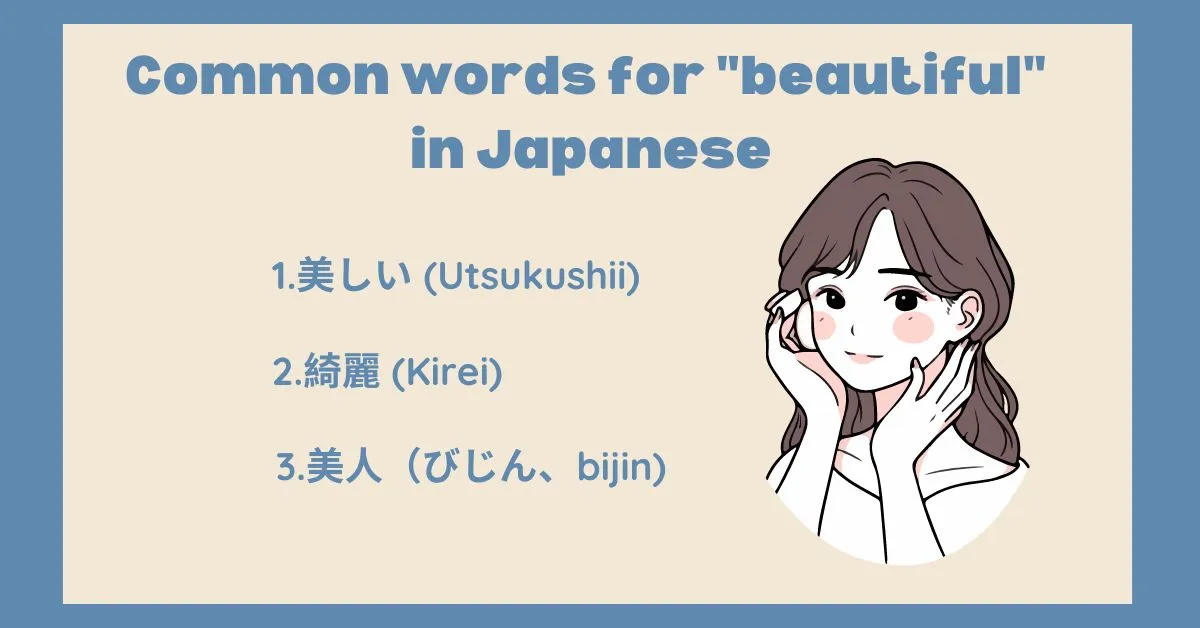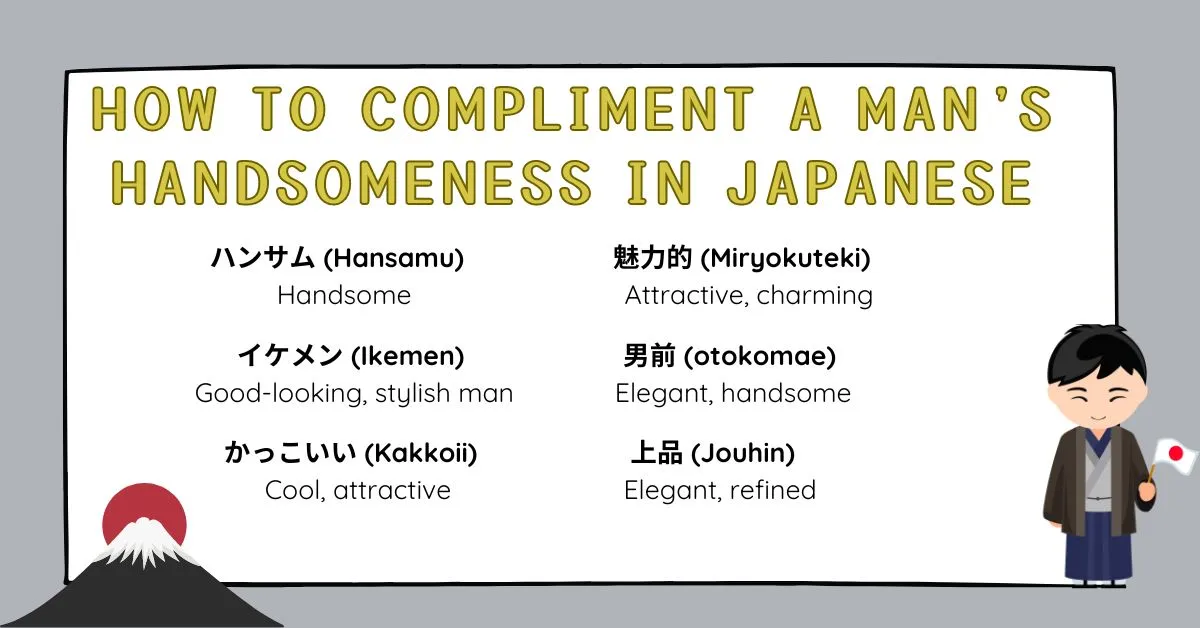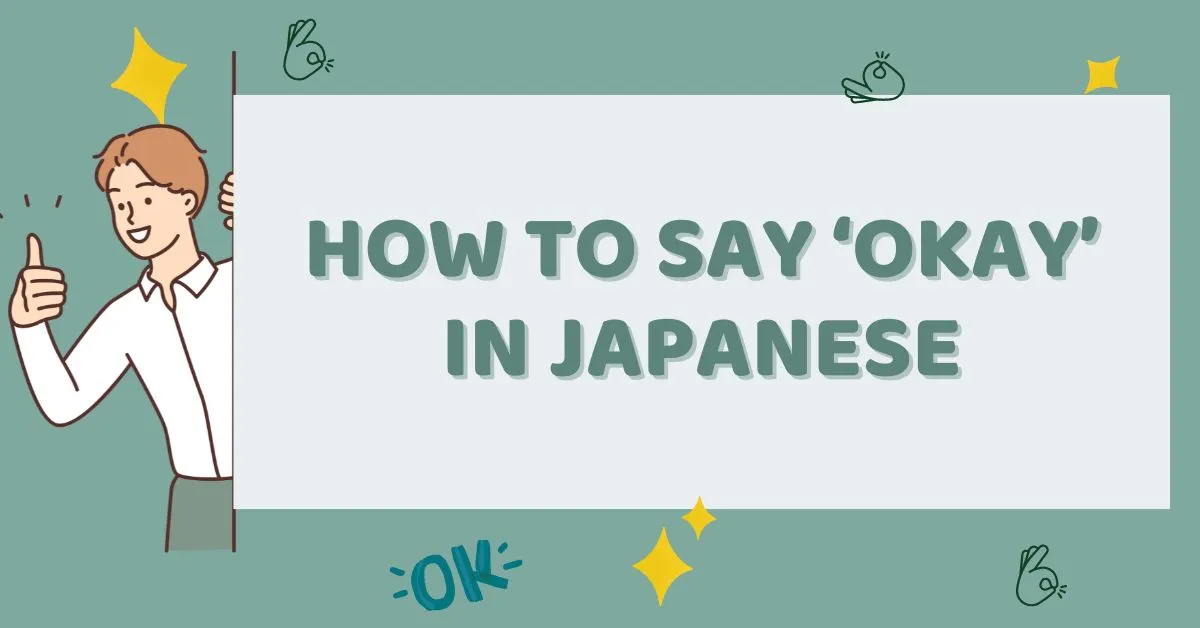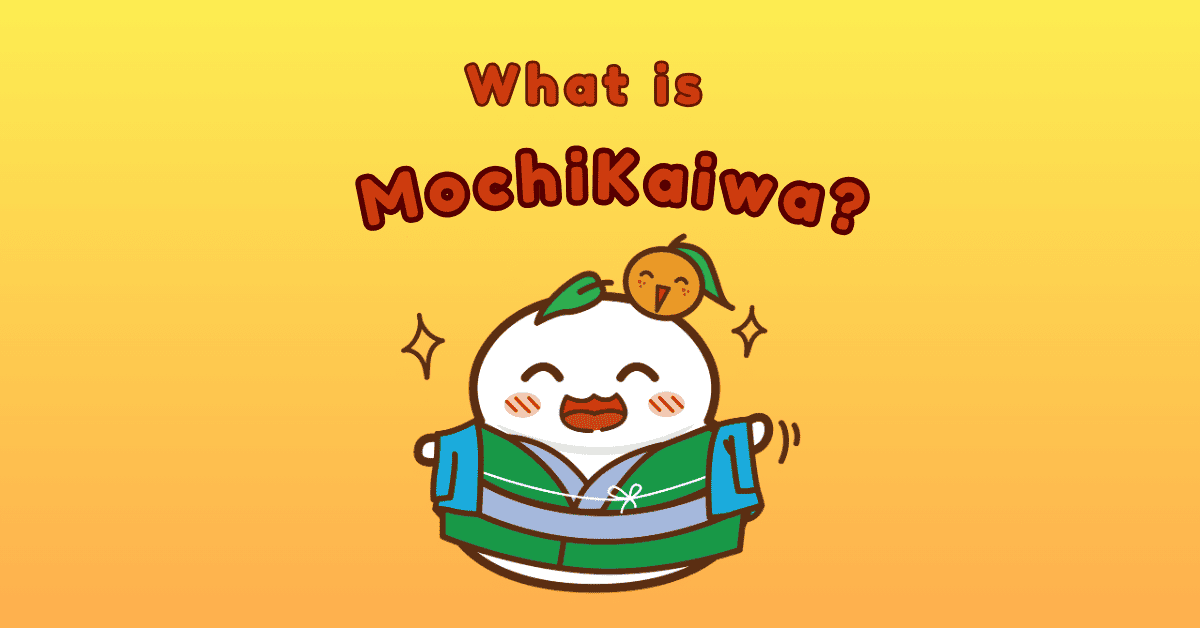When learning Japanese, knowing how to express admiration and beauty is essential. Whether you want to compliment a friend or describe something lovely, understanding how to say “beautiful” in Japanese will enrich your communication skills. In this guide, we’ll explore different ways to say “beautiful” in Japanese, providing you with useful phrases and cultural context.
- Common words for “beautiful” in Japanese
- How to compliment a girl by saying she’s beautiful in Japanese
- How to compliment a man’s handsomeness in Japanese
- Learn Japanese fast and easily with MochiKanji
- Conclusion

Common words for “beautiful” in Japanese
1. 美しい (Utsukushii)
This term signifies profound beauty and can be used for both people and things. It captures a deep sense of admiration and is often employed to describe something truly remarkable.
For example, you might use utsukushii to talk about a breathtaking landscape, like a majestic mountain view, or an exquisite piece of art, such as a finely crafted sculpture. When describing a person, you might say, “彼女は美しいです” (Kanojo wa utsukushii desu), which translates to “She is beautiful.” Similarly, you could describe a stunning sunset with “この夕日が美しいです” (Kono yuuhi ga utsukushii desu), meaning “This sunset is beautiful.”

Boost your Japanese vocabulary with MochiKanji and learn 1000 Kanji and words in just 1 month. Deepen your understanding and practice new terms effectively. Try MochiKanji now!
2. 綺麗 (Kirei)
Kirei is often used to describe something that is clean, neat, or visually attractive. It is versatile and can refer to both people and objects.
Example for a person: 彼女はとても綺麗です。(Kanojo wa totemo kirei desu.) means “She is very beautiful”. When referring to objects or places, such as a well-kept room or a pretty flower, you can use kirei as well. For example, “この部屋は綺麗です” (Kono heya wa kirei desu) means “This room is clean” and “この花は綺麗です” (Kono hana wa kirei desu) means “This flower is beautiful.”
3. 美人(びじん、bijin)
The term bijin specifically refers to a beautiful woman and is used to compliment someone’s attractiveness. It is more formal and often used to show respect or admiration. For example, “彼女は美人です” (Kanojo wa bijin desu) means “She is a beautiful woman.” This term highlights a woman’s grace and elegance. In a more general context, you could use bijin to describe a woman who has a refined and aesthetically pleasing appearance. For instance, when admiring a well-dressed woman at an event, you might say, “その人は本当に美人ですね” (Sono hito wa hontou ni bijin desu ne), meaning “That person is truly a beautiful woman.”
How to compliment a girl by saying she’s beautiful in Japanese
1. 素敵 (Suteki) – Lovely, Charming
This term means “lovely” or “charming” and is used to describe both people and things.
Example :
- “そのドレスは素敵です” (Sono doresu wa suteki desu) means “That dress is lovely.”
- For a person: “あなたは素敵です” (Anata wa suteki desu) means “You are charming.”
2. 可愛い (Kawaii) – Cute, Adorable
Kawaii is used to describe something or someone that is cute, adorable, or endearing. It’s often used in a wide range of contexts, from describing people to pets and even objects.
Examples:
- For animals: “あなたの猫は可愛いですね” (Anata no neko wa kawaii desu ne) means “Your cat is so cute.”
- For people: “彼女は可愛いです” (Kanojo wa kawaii desu) means “She is cute.”
3. 魅力的 (Miryokuteki) – Attractive, charming
Miryokuteki means “attractive” or “charming” and can describe both people and things that possess an appealing or engaging quality.
Examples:
- For people: “彼女は魅力的です” (Kanojo wa miryokuteki desu) means “She is charming.”
- For objects or places: “そのスポーツカーは彼にはとても魅力的に見えた。” (Sono supootsu kaa wa kare ni wa totemo miryokuteki ni mieta) means “That sports car looked very appealing to him.”
4. 華やか (Hanayaka) – Radiant, colorful
Hanayaka describes something that is radiant, colorful, or vibrant. It’s often used for events, decorations, or any scene with lively and vivid qualities.
Examples:
- For events: “花火大会は華やかでした” (Hanabi taikai wa hanayaka deshita) means “The fireworks festival was vibrant.”
- For clothing: “彼女のドレスは華やかです” (Kanojo no doresu wa hanayaka desu) means “Her dress is radiant.”
How to compliment a man’s handsomeness in Japanese
1. ハンサム (Hansamu) – Handsome
This term is borrowed from English and is used to describe someone who is handsome in a formal or polite context. It is often used in professional or respectful settings.
Example: “彼はハンサムです” (Kare wa hansamu desu) means “He is handsome.” This can be used when talking about a man who has a refined and attractive appearance, suitable for both formal occasions and general conversation.
2. イケメン (Ikemen) – Good-looking, stylish man
A casual term that implies a man is good-looking, stylish, or trendy. It’s commonly used in everyday conversation and often carries a sense of admiration for the men’s fashion sense or overall appearance.
Example: “彼はイケメンですね” (Kare wa ikemen desu ne) means “He is a good-looking man.” This expression is frequently used among friends or in informal settings to compliment a man who stands out with his stylish or attractive look.
3. かっこいい (Kakkoii) – Cool, attractive
This word conveys a sense of “cool” or “attractive” and can be used to describe a man who is not only physically appealing but also possesses an appealing demeanor or style.
Example: “そのジャケットはかっこいいですね” (Sono jaketto wa kakkoii desu ne) means “That jacket is cool.” When referring to a person, “彼はかっこいいです” (Kare wa kakkoii desu) means “He is cool.” This term often praises both appearance and attitude.
4. 魅力的 (Miryokuteki) – Attractive, charming
This term is used to describe someone who is charming or has an appealing presence. It is suitable for both formal and informal contexts and highlights the individual’s overall attractiveness and allure.
Example: “彼は魅力的です” (Kare wa miryokuteki desu) means “He is charming.” You can use this to describe someone whose attractiveness extends beyond just looks, encompassing their personality and charm.
5. 男前 (otokomae) – Elegant, handsome
This word describes someone who has an elegant or refined appearance. It is often used to compliment a man’s sophisticated style and graceful demeanor.
Example: “彼はなかなかの男前だ。” (Kare wa nakanaka no otokomae da) means “He is quite a handsome man.” This term is appropriate for formal settings and acknowledges a man’s refined and classy appearance.
6. 上品 (Jouhin) – Elegant, refined
This word describes someone who has an elegant or refined appearance. It is often used to compliment a man’s sophisticated style and graceful demeanor.
Example: “彼は上品です” (Kare wa jouhin desu) means “He is elegant.” This term is appropriate for formal settings and acknowledges a man’s refined and classy appearance.
Learn Japanese fast and easily with MochiKanji

MochiKanji provides a targeted learning experience through its vocabulary courses, spanning levels N5 to N2. The app utilizes interactive flashcards that make learning and retaining words more efficient. These flashcards are enhanced with images and audio, adding an engaging element to your study sessions. Begin your journey with MochiKanji today to expand your Japanese vocabulary and elevate your language proficiency!
Conclusion
Understanding how to convey the concept of “beautiful” in Japanese not only enhances your vocabulary but also deepens your appreciation for the language’s subtleties. Familiarizing yourself with these expressions equips you to give meaningful compliments and describe beauty with greater nuance. Incorporating these phrases into your conversations will help you connect more authentically with Japanese speakers and appreciate the rich cultural context behind each term.








